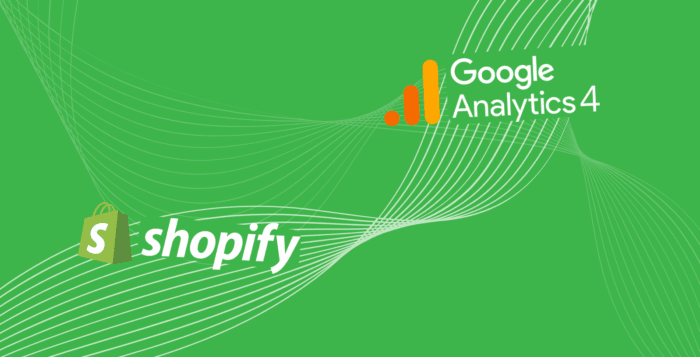“Why don’t my numbers match?”
If you’ve ever found yourself staring at your GA4 and Shopify dashboards wondering why they’re telling different stories about your sales… you’re not alone.
When we started onboarding Shopify clients using Google Analytics 4 (GA4), we expected a few setup quirks. What we didn’t expect was how persistently frustrating the disconnect would be between these two platforms.
Across startups and scaled brands alike, we hear the same question:
“Why does GA4 show different product names or totals than Shopify?”
Here’s the short (and unsatisfying) answer: we still don’t know why Google and Shopify haven’t fully fixed this. The native connectors came late to the game, and even now, things feel… disconnected.
But here’s the good news: you’re not stuck with messy data. Smart brands are already working around it—and winning.
The Core Issue: One Product, Many Names
Let’s say you’re tracking a product that comes in multiple sizes, or your storefront runs in English and French. GA4 might show you three different product names for the exact same item. It’s like trying to analyze a puzzle with mismatched pieces.
So what’s actually going on?
1. Product Variants
Shopify treats variants—like sizes or bundles—as separate SKUs, but sometimes rolls them up under a single name. GA4 doesn’t automatically reconcile that. So, your funnel reports? Fragmented.
2. Multilingual Storefronts
Selling in two (or more) languages? A product viewed in French might appear under a different name than in English. GA4 records the name exactly as it’s seen during the session—no translation magic included.
3. Messy or Incomplete Data Layers
On custom Shopify builds, especially, the dataLayer might be missing key fields or inconsistently structured. GA4 depends on this layer to interpret events, so even a small misstep can splinter your reporting.
Why This Actually Matters (A Lot)
It’s tempting to dismiss this as a “nerdy analytics problem,” but it impacts real marketing performance.
Want to retarget users who viewed a product but didn’t buy? GA4 might show that product under three different names, meaning your audience is incomplete and you’re leaving revenue on the table.
Want to know which products convert best? You might never find out, because the data’s too broken up to trust.
Bottom line: GA4 can’t be your single source of truth for product-level performance.
What Smart Shopify Brands Are Doing Instead
Here’s what we’re seeing with top-performing ecommerce clients:
1. They use GA4 selectively
Think of GA4 as your behavioural and acquisition analytics hub. It’s great for understanding traffic sources, conversion paths, and feeding clean signals into Google Ads.
But for product reporting? Not so much.
2. They build custom dashboards keyed off SKUs
Tools like Looker Studio or Power BI let you build around stable identifiers like SKU or Product ID. That means no more “item_name chaos.” Some even plug these dashboards directly into their CRM or BI environments.
3. They monitor discrepancies on purpose
Instead of chasing daily data perfection, we help clients set up delta alerts—KPI-style discrepancy monitors. When GA4 and Shopify data diverge by more than, say, 10%, they get flagged. No more obsessing over every minor mismatch.
4. They’re testing GA4’s new Item Data Import
There’s a new feature in town (more on that in a future post): GA4 Item Data Import. Early signs are promising—it could become the missing link we’ve all been waiting for.
Once That’s Solved: Bigger Wins Await
Once your data is structured and reliable, you can unlock way more than clean reports.
Here’s what our most forward-looking clients are doing next:
Attribution Modeling
With clean product and funnel data, you can feed attribution models like Polaris and better understand how each channel contributes to sales.
Marketing Mix Modelling (MMM)
Combining online and offline media? MMM helps you fine-tune budget allocation over time and understand what’s really moving the needle.
Predictive Analytics & RFM Scoring
By tying user behaviour to purchase data, you can start forecasting next purchases, predicting churn, and identifying high-LTV segments. RFM (Recency, Frequency, Monetary) scoring in particular is a game changer for personalization.
Our Take: Let GA4 Do What It Does Best
GA4 is a powerful tool, but like any platform, it has its limitations. It excels at connecting ad performance, site behaviour, and user segmentation. It’s the backbone for Google Ads conversions, remarketing audiences, and funnel analysis.
But for product-level reporting? It simply wasn’t built to handle Shopify’s complexity out of the box.
That’s why we recommend this hybrid approach:
- Use GA4 for behavioural and acquisition metrics, and to enable audience-based campaign optimization.
- Use a custom dashboard—backed by Shopify’s SKU-level data—as your product performance source of truth.
If needed, we can even help you embed those dashboards / Business intelligence (B.I) into Lookerstudio, Power BI or any internal tool your team is already using.
The Data Will Never be Perfect
But with the right architecture, you can make it consistent, clear, and actionable.
And that’s the difference between a marketing team flying blind and one making informed, confident decisions.If you’re facing similar challenges with GA4 and Shopify—or simply want to get more clarity out of your current setup—let’s talk.
